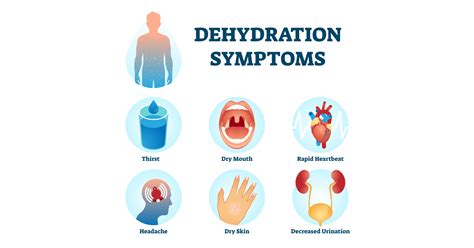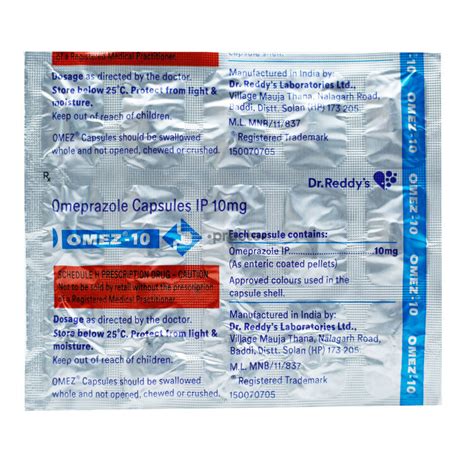Dehydration, a condition characterized by an insufficient amount of water in the body, can manifest in various ways, affecting individuals of all ages. It’s a common issue that can arise from a multitude of factors, including inadequate fluid intake, excessive sweating, certain medical conditions, and even as a side effect of various medications. Understanding the signs of dehydration is crucial for early detection and intervention, as untreated dehydration can lead to serious complications, including organ damage.
One of the earliest and most common signs of dehydration is the feeling of thirst. When the body loses more fluids than it takes in, it responds by stimulating the thirst mechanism, signaling the need to consume water. However, by the time thirst is felt, mild dehydration may have already begun. Another early indicator is a decrease in urine output. Normally, the urine should be pale yellow or clear. In cases of dehydration, urine concentration increases, leading to a darker color. This is because the kidneys try to conserve water by reducing urine production and concentrating the waste.
As dehydration progresses, it can lead to a range of symptoms that affect the body in various ways. Fatigue or a general feeling of being unwell is common, as the brain and other organs do not function as efficiently without proper hydration. Muscle cramps can also occur due to electrolyte imbalances, which are essential for muscle function. In addition, dehydration can lead to decreased blood pressure, resulting in dizziness or lightheadedness when standing. This happens because the decrease in blood volume reduces blood flow to the brain and other organs.
Loss of Skin Elasticity
A useful indicator of dehydration, especially in children and older adults, is the loss of skin elasticity. When the skin on the abdomen, arm, or other parts of the body is pinched and released, it should snap back into place quickly. In a dehydrated individual, the skin may take longer to return to its normal position due to decreased fluid in the tissues.
Dry Mouth and Eyes
Dry mouth (xerostomia) and dry eyes are also telltale signs. In a well-hydrated state, saliva helps keep the mouth moist and facilitates the process of chewing and swallowing food. Similarly, the eyes are lubricated by tears, which help to prevent irritation and infection. Dehydration can reduce the production of both saliva and tears, leading to discomfort and potentially increasing the risk of infection.
Dehydration in Vulnerable Populations
Certain populations are more susceptible to dehydration due to their increased vulnerability. Older adults, for instance, may experience a decrease in thirst sensation, making them less likely to drink enough fluids. Additionally, their bodies may have a reduced ability to regulate fluids and respond to changes in temperature. Infants and young children are also at high risk because their bodies are made up of a higher proportion of water compared to adults, and they may not be able to communicate their needs effectively. People with chronic illnesses or those taking certain medications that increase urine production are also more prone to dehydration.
Addressing Dehydration
Fortunately, dehydration can be addressed by replenishing the body with the fluids it needs. For mild cases, drinking water or electrolyte-rich beverages like sports drinks can help restore the balance. For severe dehydration, medical intervention may be necessary, including the administration of intravenous fluids to rapidly replenish lost fluids and electrolytes.
Preventing Dehydration
Prevention is key when it comes to dehydration. Making a conscious effort to drink water regularly throughout the day, even when not feeling thirsty, is crucial. The general recommendation is to drink at least eight glasses of water a day, though this can vary based on activity level, climate, and individual health needs. Including foods with high water content, such as fruits and vegetables, in the diet can also contribute to overall fluid intake.
Practical Tips for Staying Hydrated
- Monitor Urine Color: If urine is pale yellow or clear, it’s a good sign of hydration. Dark yellow or amber-colored urine suggests the need to drink more.
- Drink Before You Feel Thirsty: Thirst is a signal that the body is already starting to dehydrate. Drinking water regularly prevents this.
- Eat Hydrating Foods: Foods like watermelon, cucumber, and celery are made largely of water and can contribute to daily fluid intake.
- Avoid Sugary Drinks: While they may taste refreshing, sugary drinks can actually contribute to dehydration over time.
- Be Mindful of Medications: Certain medications can increase the risk of dehydration as a side effect. Consult with a healthcare provider about managing these risks.
Future Perspectives on Dehydration Management
As research continues to unfold, new methods for managing and preventing dehydration are emerging. For instance, innovations in wearable technology allow for real-time monitoring of hydration levels, providing personalized recommendations for fluid intake. Additionally, advancements in medical treatment options for severe dehydration aim to improve outcomes for those affected.
Conclusion
Dehydration is a condition that can affect anyone, regardless of age or health status. Recognizing its signs and taking proactive steps towards prevention can significantly reduce the risk of complications. By staying informed and making hydration a priority, individuals can protect themselves against the adverse effects of dehydration, promoting overall health and well-being.
What are the primary signs of dehydration?
+The primary signs include thirst, dark-colored urine, decreased urine output, fatigue, muscle cramps, and dizziness or lightheadedness when standing. Additionally, a decrease in skin elasticity and the presence of dry mouth and eyes can be significant indicators.
How can dehydration be prevented?
+Preventing dehydration involves drinking water regularly throughout the day, eating hydrating foods, monitoring urine color, and avoiding sugary drinks. Being mindful of medications that may increase the risk of dehydration and staying in cooler environments during hot weather can also help.
What are the risks of untreated dehydration?
+Untreated dehydration can lead to serious complications, including organ damage, seizures, and in severe cases, death. It can also exacerbate underlying health conditions and impair physical performance and mental function.


